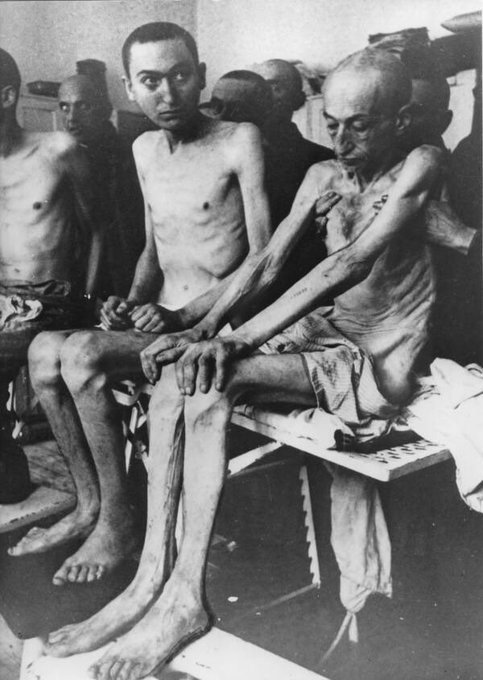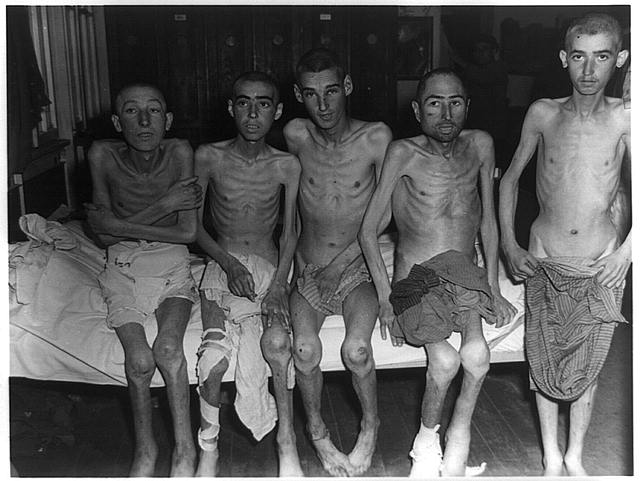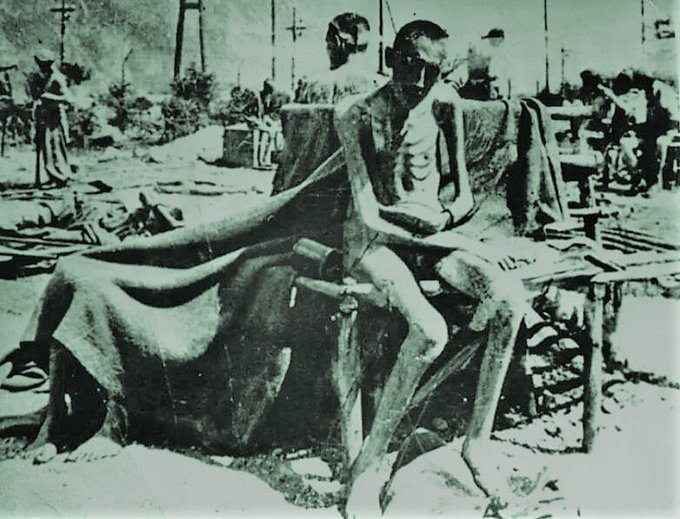𝐑𝐞𝐦𝐞𝐦𝐛𝐞𝐫𝐢𝐧𝐠 𝟏𝟎 𝐯𝐢𝐜𝐭𝐢𝐦𝐬: 𝐂𝐨𝐮𝐧𝐭𝐞𝐫𝐢𝐧𝐠 𝐭𝐡𝐞 𝐃𝐞𝐧𝐢𝐚𝐥 𝐨𝐟 𝐌𝐞𝐧𝐠𝐞𝐥𝐞'𝐬 𝐀𝐭𝐫𝐨𝐜𝐢𝐭𝐢𝐞𝐬.
🧵Josef Mengele meticulously documented his experiments at Auschwitz, proud of his horrifying work. He meticulously recorded his experiments, and he would have been angered by attempts to deny the horrors despite the testimonies of Jewish survivors who suffered through his atrocities.
Who was Josef Mengele, and who were his victims? Please read the thread below and let's explore together only 10 out of thousands of his experiments.
🧵Josef Mengele meticulously documented his experiments at Auschwitz, proud of his horrifying work. He meticulously recorded his experiments, and he would have been angered by attempts to deny the horrors despite the testimonies of Jewish survivors who suffered through his atrocities.
Who was Josef Mengele, and who were his victims? Please read the thread below and let's explore together only 10 out of thousands of his experiments.

Introduction: Josef Mengele, known as the "Angel of Death," was a German SS officer and physician at the Auschwitz concentration camp during World War II.
Born on March 16, 1911, in Günzburg, Germany, Mengele earned a doctorate in anthropology and a medical degree, which he later used to conduct horrifying human experiments.
He was infamous for his brutal and inhumane medical experiments on prisoners, especially twins, in the Auschwitz extermination camp.
Born on March 16, 1911, in Günzburg, Germany, Mengele earned a doctorate in anthropology and a medical degree, which he later used to conduct horrifying human experiments.
He was infamous for his brutal and inhumane medical experiments on prisoners, especially twins, in the Auschwitz extermination camp.
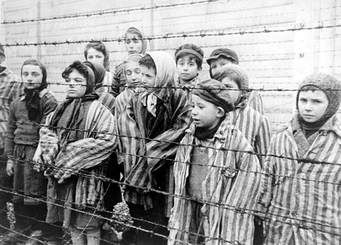
1/ Eva Mozes Kor and Miriam Mozes Zeiger:
Experiments: Known as "Mengele's Twins," Eva and Miriam were subjected to daily measurements, injections of unknown substances, and painful surgical procedures without anesthesia. Mengele's experiments included attempts to change eye color by injecting chemicals into their eyes, transfusing blood between twins, and performing invasive exploratory surgeries. These procedures often led to infections, severe pain, and long-term health issues. Miriam suffered kidney problems later in life, likely due to the strain of Mengele's experiments on her young body. There are documented photographs of both Eva and Miriam during their time at Auschwitz and in later life.
Experiments: Known as "Mengele's Twins," Eva and Miriam were subjected to daily measurements, injections of unknown substances, and painful surgical procedures without anesthesia. Mengele's experiments included attempts to change eye color by injecting chemicals into their eyes, transfusing blood between twins, and performing invasive exploratory surgeries. These procedures often led to infections, severe pain, and long-term health issues. Miriam suffered kidney problems later in life, likely due to the strain of Mengele's experiments on her young body. There are documented photographs of both Eva and Miriam during their time at Auschwitz and in later life.

2/ The Dwarves of Auschwitz (Ovitz Family):
Experiments: The Ovitz family, a group of seven dwarf siblings, were subjected to extensive and brutal experiments by Mengele, who was fascinated by their genetic makeup. They underwent countless blood draws, X-rays, and painful physical examinations. Mengele performed invasive procedures without anesthesia, attempting to understand the genetic basis of their dwarfism. The Ovitz family was forced to endure these procedures repeatedly, causing severe pain, trauma, and long-term health issues. Photographs of the Ovitz family exist, capturing their unique appearance and their suffering.
Experiments: The Ovitz family, a group of seven dwarf siblings, were subjected to extensive and brutal experiments by Mengele, who was fascinated by their genetic makeup. They underwent countless blood draws, X-rays, and painful physical examinations. Mengele performed invasive procedures without anesthesia, attempting to understand the genetic basis of their dwarfism. The Ovitz family was forced to endure these procedures repeatedly, causing severe pain, trauma, and long-term health issues. Photographs of the Ovitz family exist, capturing their unique appearance and their suffering.

3/ Vera and Olga Bejewski:
Experiments: Twin sisters Vera and Olga were subjected to Mengele's fascination with twins and his quest to understand genetic inheritance. They endured frequent blood draws, injections with various substances including infectious agents, and surgical procedures such as spinal taps performed without anesthesia. Mengele's relentless pursuit of scientific knowledge through their suffering caused severe infections, permanent physical disabilities, and psychological trauma that haunted them for the rest of their lives. There are documented photographs of Vera and Olga during their imprisonment.
Experiments: Twin sisters Vera and Olga were subjected to Mengele's fascination with twins and his quest to understand genetic inheritance. They endured frequent blood draws, injections with various substances including infectious agents, and surgical procedures such as spinal taps performed without anesthesia. Mengele's relentless pursuit of scientific knowledge through their suffering caused severe infections, permanent physical disabilities, and psychological trauma that haunted them for the rest of their lives. There are documented photographs of Vera and Olga during their imprisonment.

4/ Alex Dekel:
Experiments: Alex Dekel was subjected to Mengele's experiments involving surgery without anesthesia. Mengele performed exploratory surgeries, removing organs and tissues to study the effects on the human body. Dekel endured unimaginable pain and long-term health complications as a result of these inhumane procedures. His testimony provided crucial evidence of the brutal methods employed by Mengele. Photographs of Alex Dekel are available, documenting his survival and post-war life.
Experiments: Alex Dekel was subjected to Mengele's experiments involving surgery without anesthesia. Mengele performed exploratory surgeries, removing organs and tissues to study the effects on the human body. Dekel endured unimaginable pain and long-term health complications as a result of these inhumane procedures. His testimony provided crucial evidence of the brutal methods employed by Mengele. Photographs of Alex Dekel are available, documenting his survival and post-war life.

5/ Jona Laks:
Experiments: Jona Laks, a twin, was subjected to Mengele's experiments designed to study genetic similarities and differences. She and her twin sister were injected with various substances, underwent blood transfusions, and endured invasive surgical procedures without anesthesia. These experiments left Jona with severe physical and psychological trauma, enduring lifelong health issues. Photographs of Jona Laks exist, capturing her experiences during and after the Holocaust.
Experiments: Jona Laks, a twin, was subjected to Mengele's experiments designed to study genetic similarities and differences. She and her twin sister were injected with various substances, underwent blood transfusions, and endured invasive surgical procedures without anesthesia. These experiments left Jona with severe physical and psychological trauma, enduring lifelong health issues. Photographs of Jona Laks exist, capturing her experiences during and after the Holocaust.

6/ Zvi Spiegel:
Experiments: Zvi Spiegel was subjected to numerous medical experiments by Mengele, including exposure to infectious agents and forced participation in grueling physical endurance tests. Spiegel's body was used to study the effects of extreme conditions and medical interventions, resulting in severe physical injuries and psychological trauma. His testimony shed light on the full extent of Mengele's cruel and inhumane practices. Photographs of Zvi Spiegel are available, documenting his survival and resilience.
Experiments: Zvi Spiegel was subjected to numerous medical experiments by Mengele, including exposure to infectious agents and forced participation in grueling physical endurance tests. Spiegel's body was used to study the effects of extreme conditions and medical interventions, resulting in severe physical injuries and psychological trauma. His testimony shed light on the full extent of Mengele's cruel and inhumane practices. Photographs of Zvi Spiegel are available, documenting his survival and resilience.
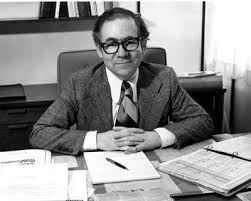
7/ Irene Hizme and Rene Hizme:
Experiments: Twin siblings who were among Mengele's subjects for genetic studies and physical examinations at Auschwitz. Irene and Rene endured injections with infectious agents, measurements of physical attributes, and invasive surgical procedures aimed at studying genetics and heredity. The twins suffered long-lasting physical and psychological trauma from Mengele's cruel and inhumane experiments, which left them with enduring scars and health complications. There are photographs of Irene and Rene Hizme from their time at Auschwitz and later in life.
Experiments: Twin siblings who were among Mengele's subjects for genetic studies and physical examinations at Auschwitz. Irene and Rene endured injections with infectious agents, measurements of physical attributes, and invasive surgical procedures aimed at studying genetics and heredity. The twins suffered long-lasting physical and psychological trauma from Mengele's cruel and inhumane experiments, which left them with enduring scars and health complications. There are photographs of Irene and Rene Hizme from their time at Auschwitz and later in life.

8/ Shlomo Venezia:
Experiments: A Jewish survivor who was subjected to various experiments by Mengele, including exposure to infectious diseases and forced participation in medical tests. Venezia's testimony provided chilling details of the horrors inflicted upon prisoners at Auschwitz, including the physical and psychological torture endured under Mengele's regime. His account shed light on the systematic cruelty and inhumanity that defined Mengele's experiments, leaving a legacy of suffering and trauma among survivors. Shlomo Venezia's photographs are available, documenting his experiences.
Experiments: A Jewish survivor who was subjected to various experiments by Mengele, including exposure to infectious diseases and forced participation in medical tests. Venezia's testimony provided chilling details of the horrors inflicted upon prisoners at Auschwitz, including the physical and psychological torture endured under Mengele's regime. His account shed light on the systematic cruelty and inhumanity that defined Mengele's experiments, leaving a legacy of suffering and trauma among survivors. Shlomo Venezia's photographs are available, documenting his experiences.

9/ Liliana Segre:
Experiments: A Jewish survivor who was selected by Mengele for his experiments, including injections with infectious agents and studies on hereditary traits. Liliana endured physical and emotional torture, including witnessing the suffering of fellow prisoners subjected to Mengele's sadistic experiments. Her testimony after the war contributed to documenting the atrocities committed by Mengele and the enduring trauma experienced by Holocaust survivors. Photographs of Liliana Segre are available, showing her during and after the Holocaust.
Experiments: A Jewish survivor who was selected by Mengele for his experiments, including injections with infectious agents and studies on hereditary traits. Liliana endured physical and emotional torture, including witnessing the suffering of fellow prisoners subjected to Mengele's sadistic experiments. Her testimony after the war contributed to documenting the atrocities committed by Mengele and the enduring trauma experienced by Holocaust survivors. Photographs of Liliana Segre are available, showing her during and after the Holocaust.

10/ Renate Guttmann:
Experiments: Renate Guttmann, a twin, was subjected to Mengele's experiments aimed at understanding genetic inheritance and physical differences. She and her twin brother were exposed to numerous injections, blood transfusions, and invasive procedures. Renate's accounts detail the pain and fear they experienced, as well as the long-term health consequences of Mengele's cruel experiments. Photographs of Renate Guttmann exist, capturing her as a child and as an adult.
Experiments: Renate Guttmann, a twin, was subjected to Mengele's experiments aimed at understanding genetic inheritance and physical differences. She and her twin brother were exposed to numerous injections, blood transfusions, and invasive procedures. Renate's accounts detail the pain and fear they experienced, as well as the long-term health consequences of Mengele's cruel experiments. Photographs of Renate Guttmann exist, capturing her as a child and as an adult.

Conclusion: The stories of these victims of Josef Mengele’s brutal experiments serve as harrowing reminders of the depths of human cruelty. Each account reflects unimaginable suffering and the strong spirit of those who survived to tell their tales.
We can never forget their pain and the atrocities they endured. Denying these horrors is an insult to their memory and an insult to the profound truth of their experiences. The evidence is irrefutable, and the trauma remains engraved in history. To deny the Holocaust and Mengele's crimes is to perpetuate hate and ignorance. We must always remember and ensure that such inhumanity is never repeated.
#NeverForget
#NeverAgain
We can never forget their pain and the atrocities they endured. Denying these horrors is an insult to their memory and an insult to the profound truth of their experiences. The evidence is irrefutable, and the trauma remains engraved in history. To deny the Holocaust and Mengele's crimes is to perpetuate hate and ignorance. We must always remember and ensure that such inhumanity is never repeated.
#NeverForget
#NeverAgain
Correction: number 10 might be the wrong photo, I'll attach the right one once I confirm..
P.S. In the 1960s, Mossad was closing in on Josef Mengele, Their agents were about to capture him in South America, but a sudden directive changed their mission. Egypt was developing a ballistic missile program with the help of ex-Nazi scientists, posing a direct and immediate threat to Israel. Mossad was ordered to prioritize dismantling this project over capturing Mengele. So, the mission shifted focus, and Mengele evaded capture,
• • •
Missing some Tweet in this thread? You can try to
force a refresh


